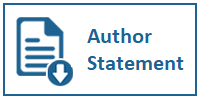Cells at Work: Media Integration Mapping
DOI:
https://doi.org/10.31937/ultimart.v14i1.2000Abstract
Cells at Work is a Japanese comic by Shimizu Akane that tells about body cells' science. The comic gains popularity as edutainment and adapted into several educative media such as spin-offs comics, picture books, games, stage plays, and many more. While it can act as good alternatives to learn about the science of cells, adaptation to media that is too diverse can create ambiguity, confusing its users. The purpose of this research is to create a media integration mapping of Cells at Work. This research employs a qualitative descriptive method. The descriptive method is used to describe and determine the use of each adaptation medium. Then this research will map the media integration. The findings show that the diversity of educational media has its roles and purposes. Spin-off comics have specific topics that can broaden the user's knowledge of various cells. At the same time, picture books are aimed at readers who want to study cells in depth without any side stories. Games are aimed at people who prefer interactive learning. The findings from this study can be used as a consideration for creating and integrating educational media.
Keywords: media integration; mapping; educational comic; science; cells at work.
Downloads
Downloads
Published
How to Cite
Issue
Section
License
Authors retain copyright and grant the journal right of first publication with the work simultaneously licensed under a Creative Commons Attribution-ShareAlike International License (CC-BY-SA 4.0) that allows others to share the work with an acknowledgement of the work's authorship and initial publication in this journal.
Authors are able to enter into separate, additional contractual arrangements for the non-exclusive distribution of the journal's published version of the work (e.g., post it to an institutional repository or publish it in a book), with an acknowledgement of its initial publication in this journal.
Copyright without Restrictions
The journal permits the author(s) to hold the copyright without restrictions and will hold distributing rights without limitations.
The submitted papers are assumed to contain no proprietary material unprotected by patent or patent application; responsibility for technical content and for protection of proprietary material rests solely with the author(s) and their organizations and is not the responsibility of the Ultimart: Jurnal Komunikasi Visual or its Editorial Staff. The main (first/corresponding) author is responsible for ensuring that the article has been seen and approved by all the other authors. It is the responsibility of the author to obtain all necessary copyright release permissions for the use of any copyrighted materials in the manuscript prior to the submission.















